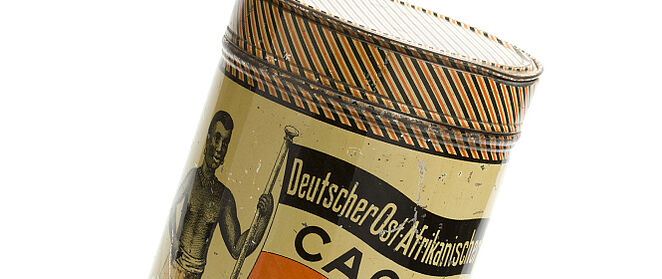Storage container „German East African Cacao“
Carl Grunow (Company), Berlin, 1884/1914

The exhibition
In the exhibition ‘German Colonialism. Fragments Past and Present’, featuring more than 500 exhibits, the Deutsches Historisches Museum addresses various aspects of German colonialism for the first time. Although the German Empire was one of the major European colonial powers from 1884 until the end of the First World War, it is only in the past few years that the colonial past has increasingly begun to enter public consciousness in Germany. The exhibition offers fascinating insight into the interests, development and dynamics of German colonial history and tells of the scope of action within which a broad spectrum of German, African and Oceanian players pursued their aims and motives. The multifarious power relations in the colonies ranged from local alliances and the daily exercise of violence to the colonial war in Namibia, which culminated in genocide.
Storage container „German East African Cacao”
European consumer habits changed with the growing colonial expansion from the 19th century onwards. Shorter transport routes, access to raw materials and direct imports made erstwhile luxury goods such as coffee, tea and cocoa affordable for broad sections of the population. While the consumer goods were mass-produced, the packaging of imported products was supposed to give the impression of exclusiveness and exoticism.
They showed pictures of tranquil life on other continents, untouched by progress, in contrast to the hectic daily life of industrialization in Europe. Not unusual were depictions of presumably happy workers doing pure manual work, arousing associations of fulfilment. This aestheticized production process ignored the real labour conditions, which were often characterized by violence and force. The use of labour power as an essential element of colonial rule was legitimated by the discourse about ‘education for work’ which declared physical work to be a means of ‘civilizing’.